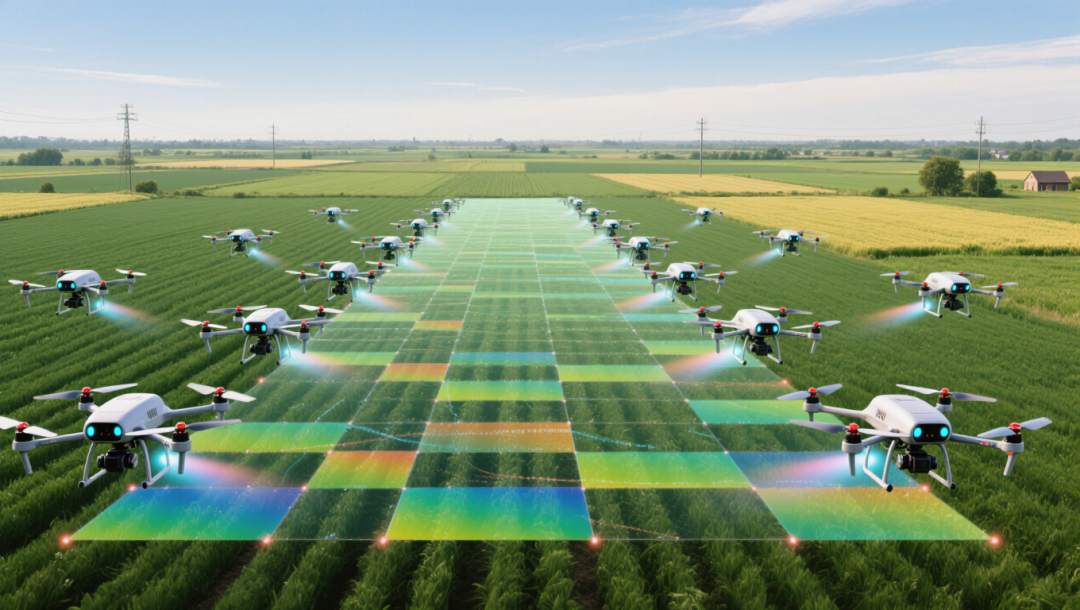When Hyper-speed Meets Smart Brain: How 5G-Advanced and AI Reshape the Era of Intelligent Connectivity
![]() 08/12 2025
08/12 2025
![]() 509
509

In 2025, the communications industry stands at a pivotal juncture: the integration of 5G-Advanced (5G-A) and artificial intelligence (AI) has transitioned from a theoretical concept to practical industrial applications, accelerating the transformation of numerous sectors.
Author | Xiao Wei
Reflecting on the past three decades of communication technology evolution, from the nascent stages of 2G voice, the initial exploration of 3G data, the explosion of 4G mobile internet, to the advent of 5G's Internet of Everything, each generation has profoundly reshaped the industrial landscape, giving rise to revolutionary applications such as mobile phones, smartphones, mobile payments, and the Internet of Vehicles, which have transformed daily life and work.
As we enter 2025, the communications industry finds itself at another historic turning point: 5G-A and 10G optical networks are moving towards large-scale commercial deployment, accelerating their integration with burgeoning AI technology. This not only fuels the digital transformation and intelligent upgrading of various industries but also unleashes boundless possibilities in cutting-edge fields like the low-altitude economy, autonomous driving, and humanoid robots.
When 5G-A, a "super connectivity" technology, converges with the surging tide of AI, a technological "nuclear fusion" transcending mere connectivity takes place. From drone swarms in the low-altitude economy to critical remote operating tables, from robotic arms in "dark factories" to electronic fences around white dolphin habitats, the landscape of various industries is being fundamentally altered.
Real Integration Drives Comprehensive Acceleration of 5G-A Commercialization
5G-A represents an enhancement and evolution of 5G mobile technology, with "faster speeds, lower latency, broader connections, and more accurate sensing" as its core advantages. Since its commercial launch in 2024, through deep integration with the real economy, 5G-A has witnessed a comprehensive explosion at the technical, application, and industrial levels.
Technological Leap: "Downlink 10Gbps, Uplink 1Gbps" Becomes a Reality
At the technical level, compared to traditional 5G technology, 5G-A significantly enhances network speed, latency, and connection scale, providing a robust network foundation for the widespread adoption of cutting-edge technologies such as AI, XR, and autonomous driving.
In terms of speed, 5G-A achieves a tenfold leap, with the maximum data download rate soaring from gigabits in the early 5G era to ten gigabits, and the peak uplink rate also increasing from hundreds of megabits to gigabits. In terms of latency, 5G-A supports millisecond-level ultra-low latency, accelerating the implementation of low-latency scenarios such as real-time communication, autonomous driving, and remote surgery.
Furthermore, with core capabilities like integrated communication and sensing, space-air-ground integration, and intelligent uplink, 5G-A can not only "connect" everything but also "sense" the position, speed, and form of everything, providing essential technical support for the deep integration of the physical and digital worlds.

Application Explosion: Reshaping Connectivity Experience and Creating Massive Scenarios
At the application level, technological progress ultimately serves humanity. The formidable capabilities of 5G-A are giving birth to a series of new applications, reshaping calling, entertainment, and office experiences. New calling, cloud gaming, ultra-high-definition video, and other new consumption formats are thriving on the fertile soil of 5G-A.
Previously, applications like VR and glasses-free 3D often suffered from image stuttering and severe dizziness due to insufficient network bandwidth and excessive latency. With the high speed and low latency of 5G-A, user experience will be significantly enhanced, enabling immersive interactions among multiple people, in large spaces, and without constraints.
Industrial Ecosystem: Thousand Sails Competing, Jointly Building a Digital Foundation
From operators, equipment vendors, to terminal manufacturers and application developers, a thriving ecosystem centered on 5G-A is rapidly taking shape. According to a report by the Global mobile Suppliers Association (GSA), as of May 2025, 26 operators in 15 countries worldwide are investing in 5G-A. It is anticipated that by the end of 2025, over a hundred mobile phone and CPE terminals will support 5G-A, with over 100 million users enjoying exceptional network experiences.
As of June 2025, more than 300 cities in China have initiated 5G-A network coverage, with cities like Shanghai and Beijing even releasing special action plans aimed at creating demonstration hubs for 5G-A applications.
Reconstructing Various Industries: Which Areas Will Be Disrupted
In the era of 5G-A, technology is not merely reflected in the evolution of speed but also in the reshaping of productivity and lifestyle.
With core capabilities such as integrated communication and sensing, space-air-ground integration, and intelligent uplink, 5G-A is reconstructing the industrial ecosystem and promoting digital transformation and upgrading in unprecedented ways. The crux of this round of technological innovation lies in upgrading the network from a single connection channel to a digital nervous system with sensing, intelligence, and adaptive capabilities.
Communications, Entertainment: Qualitative Upgrade of Immersive Experience
5G-A is revolutionizing traditional multimedia consumption and entertainment experiences, establishing a new immersive and interactive consumption ecosystem. In Beijing, passengers can already smoothly watch 4K high-definition videos on the speeding Metro Line 3 through the 5G-A network, with an average download speed of up to 1.7Gbps within the tunnel. At Scottish Premiership matches, the 5G-A network supports 30,000 spectators online simultaneously, providing a smooth and seamless network experience. At Shougang Park in Shijingshan, Beijing, the 5G-A network seamlessly supports the 8K ultra-high-definition images and zero-lag interaction of VR entertainment projects.
Autonomous Driving: Centimeter-level Coordination of Vehicle-Road-Cloud Integration
Through deep integration with Beidou/GPS satellite navigation and ground base stations, 5G-A can achieve nanosecond-level latency and centimeter-level positioning accuracy for vehicles. In typical vehicle-road coordination scenario tests, vehicles complete the full-link closed loop of environmental perception, decision-making planning, and control execution within just 10 milliseconds.

Low-altitude Economy: Opening a New Era of Space-Air-Ground Integration
The low-altitude economy is emerging as a new growth pole for the digital economy. The 5G-A network provides reliable high-density, high-speed, and low-latency connectivity for core low-altitude economic scenarios such as space-air-ground integration. For instance, 5G-A enables drone swarms to transmit 4K high-definition video and multispectral imaging data in real-time, offering unprecedented sensing capabilities for fields like agricultural monitoring, emergency rescue, and logistics distribution. In the Zhoushan waters of Zhejiang Province, 5G-A's integrated communication and sensing technology safeguards drone maritime routes spanning hundreds of kilometers.
Manufacturing and Energy: The Neural Network of Smart Factories and Mines
5G-A bids farewell to traditional manual operation modes in industrial production, ushering in a full-process unmanned transformation. In "dark factories," the 5G-A private network enables fully automated production, with equipment operation and maintenance and quality control processes fully online. At the Yimin open-pit mine in Inner Mongolia, 5G-A supports the real-time video return and cloud-based collaborative scheduling of hundreds of unmanned mining trucks, enabling 24/7 operations even in extreme environments, which not only boosts production efficiency but also reduces labor costs and safety risks.

Telemedicine: Overcoming Geographic Limitations for Fairer Medical Care
5G-A is reshaping the distribution model of medical resources. Ultra-low latency and high-definition video transmission make remote surgery and real-time consultations possible. Top medical experts can cross thousands of miles and precisely control surgical robots through the 5G-A network, providing advanced medical services to patients in remote areas and promoting the inclusive distribution of medical resources.
Social Governance: Precise Governance with Digital Twins
With the support of 5G-A, the urban governance model has shifted from passive response to active early warning. By deploying 5G-A integrated communication and sensing base stations along the Huangpu River channel, the speed and position of ships can be accurately sensed from one kilometer away even during heavy rain and fog, with identification accuracy up to sub-meter level. Based on 5G-A's intelligent sensing, traditional passive management is being upgraded to active and precise digital governance.
It is evident that across various industries, 5G-A is redefining the boundaries of production, life, and social governance, opening a new chapter of intelligent connectivity.

5G-A×AI: Linking the Future Industrial Landscape
If 5G-A is a superhighway for information flow, then AI is the "intelligent driving system" traveling on this road.
When the two converge, the result is not merely "1+1=2" but a profound industrial fusion. 5G-A provides AI with ubiquitous, real-time, and efficient data transmission capabilities, while AI equips the network with the "brain" for perception, thinking, and autonomous optimization, jointly injecting critical momentum into new-quality productivity.
In 2025, the integration of 5G-A and AI has transitioned from a technical concept to industrial application, reshaping the boundaries of the industrial ecosystem. This integration is not merely a simple superposition of technologies but an innovative paradigm of cross-border collaboration.
In terms of technological integration, the core of the fusion between 5G-A and AI is to build a connected network with "endogenous intelligence," realizing the bidirectional empowerment of "intelligence in the network" and "network for intelligence."
In terms of the industrial ecosystem, the role boundaries of communication operators, AI algorithm companies, cloud service providers, industry application developers, and terminal manufacturers have become more integrated, fostering unprecedented levels of collaborative innovation.
In terms of social value, high-quality, low-latency networks and AI technologies enable high-quality education and medical resources to transcend geographical barriers, benefiting remote areas and steering society towards a fairer and more sustainable development path.

Through implemented case studies, we can glimpse the profound implications of this technological revolution:
In the realm of personal consumption, the fusion of 5G-A and AI has given rise to numerous new consumption scenarios and formats, blending immersive interaction with intelligent experience. For example, China Mobile deeply integrates 5G-A and AI to create "AI+Calling." The ultra-humanoid AI agent, which incorporates emotional interaction large models, digital human driving, and voice duplication technology, can provide 24/7 emotional companionship and diverse services such as AI calling assistants, including real-time call subtitles, AI stenography, simultaneous interpretation, and intelligent recognition, achieving a significant upgrade in calling experience.
In embodied intelligence applications, ZTE, in collaboration with partners, has developed the 5G-A EasyOn·Robot drive multi-body coordination solution, which addresses technical challenges such as multi-robot coordination and real-time interaction in high-concurrency scenarios. The 5G-A EasyOn·Robot minimalist private network supports parallel high-definition video return of multiple robots, real-time interaction of massive sensor data, and coordination of high-frequency fine movements, exploring practical implementations for full-process unmanned intelligent services.
In ecological protection, Fujian Mobile has established a 24/7 online ecological monitoring network for protecting Chinese white dolphins through "5G-A+AI." Ten 5G-A base stations utilize integrated communication and sensing technology to efficiently fuse radar, satellite, and ship AIS signals, precisely outlining a "safety zone fence" on the electronic chart. AI algorithms also assist law enforcement personnel in locking onto suspicious vessels, reducing response time by 65% compared to manual monitoring.
From consumer applications to ecological protection, from industrial production to public services, the fusion of 5G-A and AI is reshaping industrial boundaries in unprecedented ways, heralding a new era of intelligent connectivity.
Conclusion
The fusion of 5G-A and AI is evolving from technological exploration to a core engine driving new-quality productivity.
From September 24th to 26th, 2025, at PT/EXPO COMM CHINA 2025, the complete landscape of this transformation will be unveiled. With the theme "New Engine for Digital-Real Integration, Intelligence Ignites New Momentum for the Future," the exhibition will gather over 300 leading enterprises to decode the ultimate industrial answer to "5G-A×AI=?"








